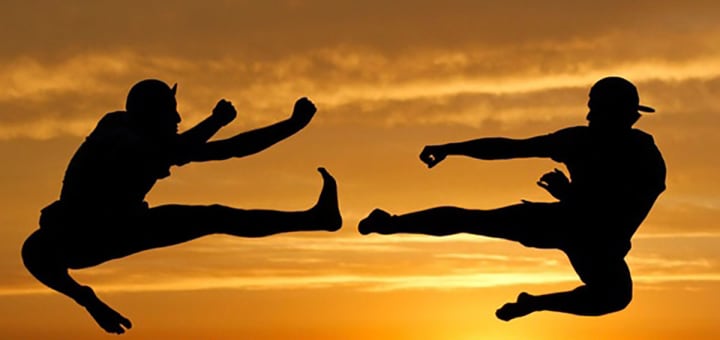Evolution of American Martial Arts Training
There has been a slow dissipation in the role of traditional values in American martial arts training.

Throughout the martial arts community, it seems that there has been a slow dissipation in the role of traditional values, in many cases, there has even been total abandonment-a disturbing observation. However, given that values are not the motivating factor for most enrollees and that most people, in fact, enroll into martial arts to become stronger, tougher, faster, and meaner (the exact reverse of the teachings), many schools have conformed to those demands in order to survive. Although to some extent, we have to appease the students in order to keep their interest, does that require desertion of the traditional aspects? After all, we have to pay our bills, and the instructors must make a living.
There are still many exceptional schools that manage to maintain a traditional backbone. There are options to losing the moral focus. For example, somewhere in between total emphasis and abandonment, Tae Kwon Do Master Hee Il Cho applies one of martial arts' most basic principles - balance. He delicately balances the ostentatious" tournament" aspect of martial arts with the fundamental tenets.
In the first place, the training, in and of itself, is a path to the philosophy. Simply by training, by being on time, by bowing and showing respect, the tenets of the martial arts, in time, naturally become part of one's life because of the discipline necessary to train every day and the necessity to adhere to the moral codes. Additionally, by being in the environment and by bowing, the student learns courtesy, modesty and respect. That is a very important lesson for most beginners. Initially, they don't want to bow and say 'yes sir" or "no sir" because they are so afraid to be below another person. But they-learnt that in order to pay respect, one must also have self-respect.
Training Body and Mind

Martial arts students must memorize the aims and principles, which include modesty, courtesy, integrity, self-control, discipline, and perseverance, as well as learn the meanings of the forms in order to test for their appropriate belts. Furthermore, each student must pledge to train both mind and body, defend truth, be loyal, strive for only good, respect nature, and work towards creating harmony amongst all people.
And although Cho chooses not to discuss these philosophies at length, he feels that the students will inadvertently gain an understanding of the meanings and therefore benefit from them. The martial arts are about character development, becoming a better person, better skilled and more human; and the training develops these qualities without a need to discuss them in detail. They don't always need to know how things work to benefit from them. Similarly, I don't know how my car works, but know that if turn the wheel in such a way and press on the gas, it takes me where need to go. I therefore benefit from the car without totally understanding the technicalities.
Although it seems obvious to most of us to study and execute forms as a primary source of training and unheard of to exclude them, the practices of various schools may have shocking findings to traditionalists. Many people feel that the forms have nothing to do with fighting and Consequently, don't use them. It's unfortunate that this is happening, but it's really only with instructors who are less qualified and have not gone through the proper achievement levels to earn their belts, so they make up their own patterns. The problem with that is then there is no base. The forms are like teaching a child the alphabet. Once the fundamental patterns are learned, then the child can learn to make words and sentences.
Understanding Form

Tae Kwon Do

In contrast to the Chinese and Japanese martial arts, the Tae Kwon forms that Cho utilizes are very rigid and hard movements. This stems from the belief that the utilization of hard, intense, fast techniques in the patterns will trigger the same response in emergency circumstances. Many people believe that slow patterns still enable one to fight, but realistically, that doesn't make any sense because to develop a fast twitch of the muscles, one must train the muscles to be fast. Speed does not come naturally. It takes practice. A Sprinter cannot practice in slow motion and still expect to increase his speed.
Still, Cho does not exclude the importance of the softer or slower styled forms. Each form is put together for good reasons. Even in the slower executions, there is still muscle development and thinking going on, and sometimes it's like arithmetic. The student doesn't know why he is studying it, but it will prove to be useful. But the focus of Tae Kwon Do is on the practical fighting techniques. It's based on the scientific approach that power is equal to speed and weight, and on utilizing the body in the most practical and powerful way, not some mystical premise. One doesn't break bricks because of magical power. They break them because they have confidence, focus, and hit them very hard and fast.
About the Creator
Mackenzie Lu
Namaste. Active yogi and life enthusiast. It has become her mission to spread the benefits of having the mind, body, and soul in tune with one another.






Comments
There are no comments for this story
Be the first to respond and start the conversation.